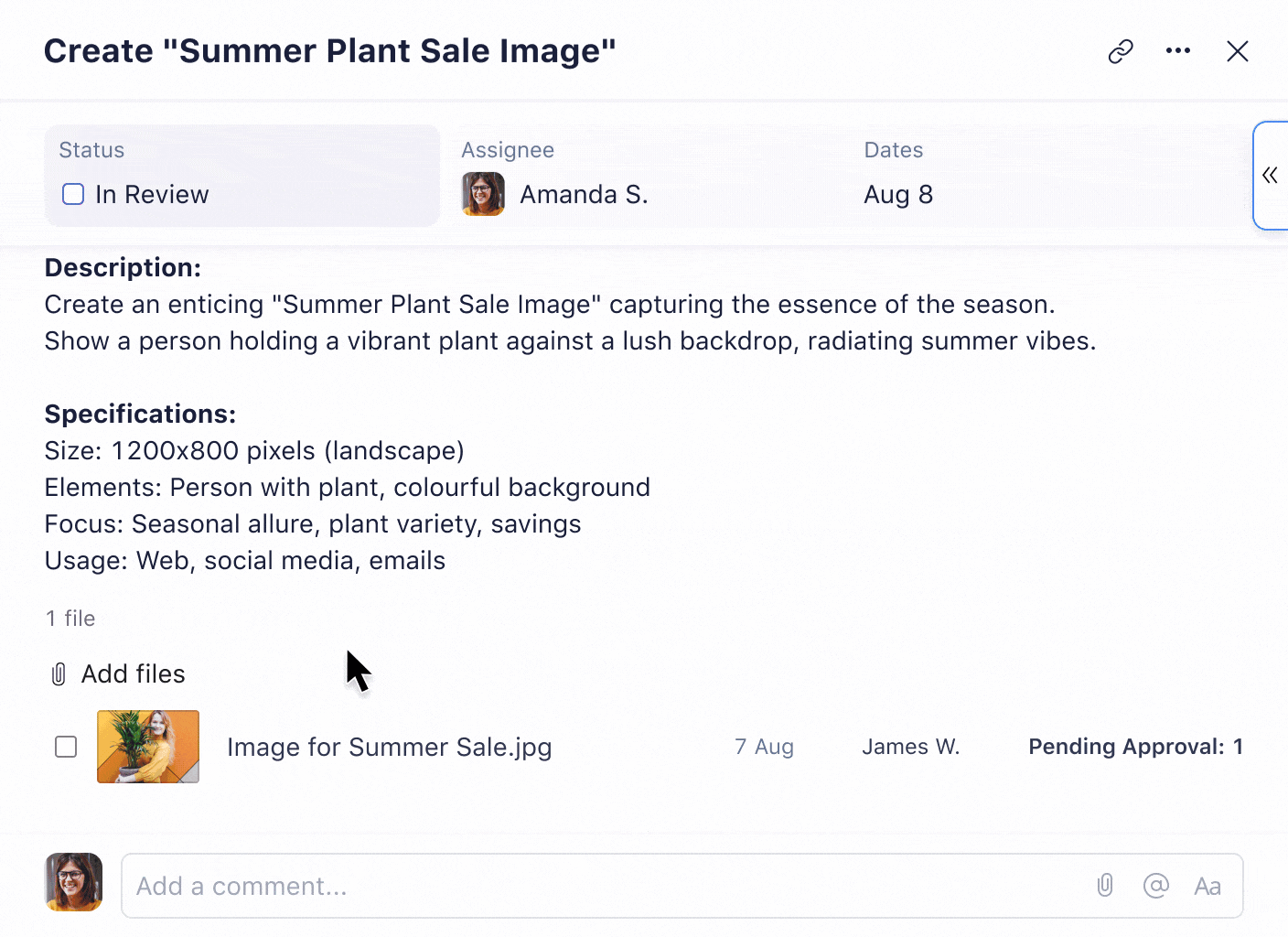In many cases, adopting Wrike involves switching from insufficient software, or perhaps moving from a cobbled-together system of emails and other online tools over to Wrike. But I’d argue that moving from a fully manual system over to Wrike is a bigger jump — and that the dividends are even more significant.
Today, we’ll hear from a Wrike user whose organization moved from a paper-based approval process into Wrike. And let’s just say that has been a game changer.
With our Championing Change series, we cover all types of Wrike adoption, and today, we get to hear from Daniel Anez of Novelty Inc. Daniel is a Design Manager at Novelty, a company that creates thousands of unique and trending wholesale items that it then sells to retailers. While Novelty used to rely solely on analog processes that left details and projects falling through the cracks, the company has now fully embraced Wrike for end-to-end workflow management that everyone can trust.
From passing paper to clicking ’approved’
Before the creative team at Novelty transformed their workflows with Wrike, they relied on a completely manual process that included physical folders, printed documents, and long email threads. “Every project had its own folder, and approvals were handled by passing around printed versions of documents with handwritten notes,” Daniel explained. If someone needed an update, they had to either find the right folder or send an email and wait for a response. Unfortunately, Daniel said this was not only slow and inefficient, “but it also made tracking project progress nearly impossible.”
In addition to the paper process, Novelty’s design team also relied on complicated email threads. Daniel reported, “Important details were buried in massive email chains, and it was easy to lose track of who was responsible for what.” If someone went on vacation or missed an email, projects would stall. The team had no easy way to monitor deadlines or see if tasks were completed without manually checking in with team members.
Daniel’s team eventually realized they needed a better system and began looking for a digital project management tool that would help them eliminate bottlenecks.
Wrike stood out because it allowed us to organize everything in one place, track progress in real time, and improve team collaboration — all without relying on physical folders or scattered email.
Daniel Anez, Design Manager
Shifting processes in a phased approach
The shift from a paper process to using Wrike exclusively took thoughtful planning. “At first, there was resistance — many team members were used to their paper-based system and worried about learning new software,” recalled Daniel.
In order to make the transition smoother, Daniel devised a phased approach of introducing Wrike first for a few select projects before rolling it out to all of the teams’ work. “This helped the team get comfortable using tasks, folders, and comments without feeling overwhelmed,” he explained.
Once the team got the hang of Wrike, they gradually moved away from printouts. Daniel created new processes that involved creating and tracking all new projects in Wrike, which helped encourage adoption. They were also able to digitize older projects over time, so their archive was accessible through Wrike as well. “We encouraged the team to communicate directly within Wrike tasks instead of sending emails, which ensured that all conversations were tied to the relevant project and easily accessible to everyone.”
Over time, the Novelty team began requiring that all approvals take place through Wrike, which further encouraged platform use. Before Wrike, the process involved endless email threads and confusion over asset versions. “Once we made it clear that all approvals had to go through Wrike, everything became more organized,” Daniel said.
The proofing and approval features allowed us to keep all feedback in one place, with clear timestamps and version tracking, eliminating back-and-forth confusion. If a project wasn’t approved in Wrike, it simply wasn’t considered final, which made it easy for everyone to adjust to the new system.
Daniel Anez, Design Manager

Easing the transition
To help the team adjust, Daniel also set up Wrike training sessions and created simple guidelines on how to structure projects, assign tasks, and use automation to reduce manual work. And for those who were hesitant to move away from email, Wrike’s @mention feature made the transition much smoother.
“Some team members, especially those who weren’t as comfortable with new programs, preferred sticking to email as their main communication tool. By using @mentions in Wrike, they would still receive an email notification linking them directly to the task, so they could interact with Wrike without feeling like they had to learn an entirely new system overnight.”
This small step helped ease the transition, giving the team time to get familiar with Wrike while still staying engaged in their usual workflow. Over time, as they saw how much easier it was to track projects, keep conversations organized, and avoid losing critical approvals, they naturally started relying on Wrike more and more. By making Wrike the required platform for approvals and using simple tools like @mentions to keep email-reliant team members in the loop, the crew at Novelty was able to streamline communication and get full team buy-in.
What started as a structured push to improve efficiency turned into an everyday habit, and now Wrike is second nature for everyone.
Daniel Anez, Design Manager
Creating a collaborative way to manage projects
Wrike transformed the Novelty team’s workflows, taking them from misplaced files, lost emails, and unclear responsibilities to structured, efficient, and transparent processes. Everything is now in one place, deadlines are clear, and approvals move smoothly. “It’s made my job easier, reduced stress for my team, and ultimately helped us complete projects faster and with better results,” Daniel stated.
If you’re looking for a way to bring more organization and accountability into your workflow, Wrike is definitely worth using. It’s not just a task manager — it’s a full-scale project management tool that keeps everything running like a well-oiled machine.
Daniel Anez, Design Manager
Daniel’s creative team no longer deals with lost documents, missed emails, or confusion over deadlines. Instead, all their work is now digital, accessible, and easy to track. Approvals that used to take days are now completed in hours, and team members always know exactly what they need to work on.
The switch from analog routines to Wrike required a phased approach and small changes that built into the final transition, and the Novelty creative team is proud of the results.
“Looking back, moving from printouts and emails to Wrike was one of the best decisions we made,” reflected Daniel. “It wasn’t just about replacing outdated systems — it was about creating a faster, more efficient, and collaborative way to manage projects. Now, I can’t imagine going back to the old way of doing things!”
Have you been eyeing a switch from outdated processes to streamlined workflows that deliver real results? It’s time to try Wrike. And did you hear? Klaxoon’s infinite whiteboard is now part of our suite of products, and it’s perfect for creative teams. Start a free trial today.





